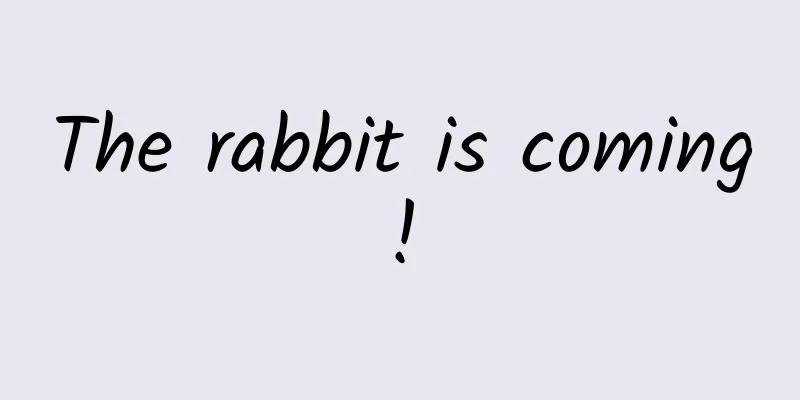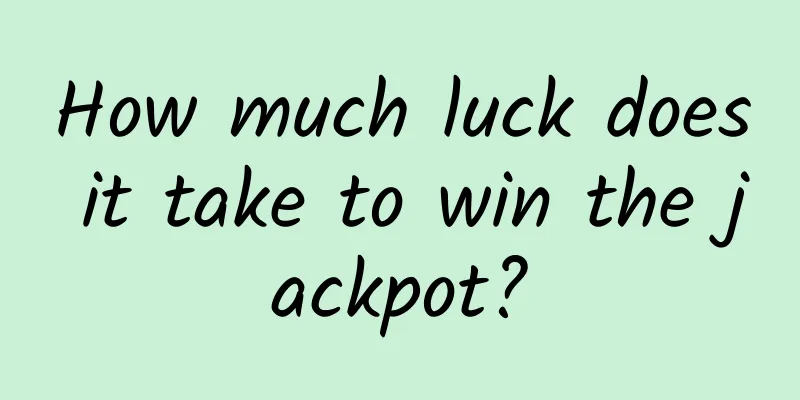The rabbit is coming!

|
Bunny Using cute appearance Confusing you Their fortunes rise and fall But it always affects your life (A rabbit with an innocent face, picture source: Visual China) ▼ The lucky rabbit not only "ascended to heaven" You can also accompany Chang'e Enjoy the "right to live" on the moon Worshiped every year (Cute bunny, picture source: Visual China) ▼ The unlucky rabbit sacrificed his life for justice Grilled, smoked, fried Mouth-watering variety of eating methods Capture the hearts of many diners (Rabbit running away, photographer @徐永春) ▼ Bunnies are cute But it's not just cute They look harmless. But in the fiercely competitive zodiac battle Grab a spot Besides being cute What are the bunnies hiding? What kind of strength? rabbit Born as a "vulnerable group" Almost all carnivores have a taste for it. (Snowshoe hare being hunted by Canadian lynx, image source: @Visual China) ▼ Rabbit's Ancestor Dating back 62 million years Anhui Model Pika It is currently found in the world The earliest lagomorphs (Classification of Lagomorpha, drawn by @Hanqing/Planetary Research Institute) ▼ Its discovery proves the relationship between rabbits and mice The former has four upper incisors and belongs to the **"Lagomorpha"** The latter has two upper incisors and belongs to the **order "Rodentia"** The Lagomorpha is further divided into two major branches One of them is more primitive Belongs to the family Ochotonidae (Although the pika looks like a mouse, it is also a member of the order Lagomorpha. Photographer: @博涵) ▼ The long-eared rabbit we are familiar with It belongs to the family Leporidae. According to different nature The rabbits are divided into Hares, the wild rabbits and burrowing rabbits (Comparison between wild rabbits and burrowing rabbits. The Leporidae family is usually divided into two categories: wild rabbits and burrowing rabbits. Domestic rabbits are domesticated from wild burrowing rabbits. Map by @Hanqing/Planetary Research Institute) ▼ As a weak link in the food chain In order to survive in a natural environment surrounded by powerful enemies Rabbits have developed a unique way of life They hide in caves and the night, hiding during the day and coming out at night. Oversized ears act like radar Can easily detect changes in the surroundings (Alert rabbit, photographer @徐永春) ▼ To leave a way out for yourself On weekdays, they also investigate All the holes and crevices When the enemy is chasing you You can hide in the shelter in time (The rabbit and its hiding place, image source: Visual China) ▼ They are cautious by nature Know that it is better to be cautious than to be prudent Not only do they frequently change their hiding places, And also know how to hide your footprints It can be said that “A cunning rabbit has three burrows” (Diagram of hare habitats and tracks. Hares usually have multiple hiding spots. When approaching a hiding spot, they will use a special jumping method. The footprints, direction and jumping distance are very different from normal. Map by @Hanqing/Planet Research Institute) ▼ If you are accidentally discovered by your natural enemies Speed is the key to saving lives They are small But has strong hind legs This gives them extremely high short-term explosive power. And can quickly change the running direction (A running hare can reach a speed of about 60 kilometers per hour, picture source: Visual China) ▼ Even if there are rabbits killed Rabbits have strong reproductive capacity It also allows the race to continue (The gestation period of the rabbit is only 28-33 days, and each litter can produce about 8 cubs, and about 6 litters can be produced each year. Image source: @Visual China) ▼ When the rabbit is hungry, it eats in the forest; when the rabbit is thirsty, it drinks in the river. Although born weak But the rabbits are still trying to survive With agility and careful movements In the cruel nature "Break out" your own world (Rabbit playing, picture source: Visual China) ▼ From the plateau to the fields From desert to island They can be found everywhere (Distribution diagram of Leporidae species in China. There are two genera of wild rabbits in China, 11 species of Lepus and 1 species of Corydoras. Photographers: Zou Tao, Ao Yongmei, Wang Yufan, Visual China, Wikimedia Commons. Map by: Song Nan/Planetary Research Institute) ▼ The rabbit is so agile. The whereabouts of the rabbit are so unpredictable How were they "captured" by humans? Becoming common livestock and pets? Chasing the Rabbit Maybe it started thousands of years ago. Paleolithic The Shangdingdong people had already used hares Considered as prey (A large number of rabbit bone fossils have been unearthed at the Zhoukoudian site. Photographer: @龙世杰, map by @冯艺卓/Planetary Research Institute) ▼ Catch these long-eared, long-legged little guys It must not be easy People used hunting nets and nailed wooden stakes Placed at intersections and in the jungle (From The Book of Songs: Rabbit Trap) ▼ "The rabbit traps are so tight, and the sound of the hammer is so loud… The rabbit traps are so tight, and they are set in Zhonglu… The rabbit traps are so tight, and they are set in Zhonglin." A leaping rabbit is caught by a dog Agile rabbit Maybe only hounds can catch up (A rabbit being chased by a hound, photographer @高国哲) ▼ They shuttle between the grass and the woods That free and unrestrained figure deeply attracted humans Therefore, their distinctive appearance Incorporated into text (“Rabbit” in oracle bone script and bronze inscription, illustration by Feng Yizhuo/Planet Research Institute) ▼ Shaped into objects (The Western Zhou Rabbit Zun in the collection of Beijing Poly Art Museum has obvious characteristics of a wild rabbit. Photographer @柳叶氘, map @冯艺卓/Planet Research Institute) ▼ Running rabbit It also stimulates people's desire to hunt Since the beginning of the Shang Zhou Rabbit hunting has become Royal family favorite activities (A divination of a rabbit hunting activity recorded in oracle bone inscriptions, drawn by @冯艺卓/Planetary Research Institute) ▼ Qin and Han Dynasties The captured rabbits Released in the emperor's garden For hunting and entertainment This is how the ancients began to train hares (From "Xijing Miscellaneous Records") ▼ "King Xiao of Liang was fond of building palaces, gardens and parks, and he built the Yaohua Palace and the Rabbit Garden." Rabbit hair is not only a good material for making fur Can also be used to make pens The rabbit hair brush is soft and round. (White jade purple-hair brush with imperial inscriptions in the collection of the Palace Museum, photographer @柳叶氘, map @冯艺卓/Planetary Research Institute) ▼ Fur and edible value Make rabbit breeding popular They are kept in cages with chickens Became a member of family farming (The famous "chicken and rabbit in the same cage" problem in Sun Zi Suan Jing during the Northern and Southern Dynasties) ▼ "Now there are pheasants and rabbits in the same cage. There are thirty-five heads on top and ninety-four legs below. How many are there of the pheasants and rabbits?" certainly Too much vitality Sometimes it brings disaster Rabbits are rampant Wipe out the crops Once caused a "rabbit disaster" (From "Book of Tang - Records of the Five Elements", this is the earliest record of rabbit damage in my country) ▼ "In Yongchun, the haze was so strong that rabbits harmed the crops. There were tens of thousands of them in a group, eating up all the crops. The rabbits were no longer seen." In addition to being treated as livestock Rabbits are also known for their cute appearance. Captured more people's hearts The best among them A rabbit with pure white fur (Cute white rabbit, photographer @张洪科) ▼ But in ancient China White rabbits are very rare Wild rabbits living in China The fur is generally brown Only the snow rabbit after winter molting Or a very small number of rabbits with coat color gene mutations The fur will appear white (Swipe left to view, the left picture shows a snow rabbit after molting in winter, and the right picture shows a snow rabbit before molting, photographers @敖咏梅, wikimedia commons) ▼ In ancient times, white was considered auspicious. Rare white rabbit It is often accompanied by a grand ceremony. Presented to the Emperor (The Palace Museum has a collection of the Qing Leng piece "Two Rabbits Under the Wutong Tree". The rabbits in it are snow rabbits after molting in winter. The photographer is @柳叶氘) ▼ However, during the reign of Emperor Chongzhen of the Ming Dynasty The arrival of several ships from Southeast Asian countries Breaking this situation White rabbit carried on board It caused a sensation for a while People are rushing to buy and cultivate White rabbit also became popular So much so that it was already everywhere in the early Qing Dynasty (From the "Ninghua County Annals", white rabbits may have been introduced to China earlier, but they became popular in the Ming Dynasty. The white rabbits in this record may be domestic rabbits that evolved from wild European rabbits, which have better reproductive ability than wild rabbits) ▼ "In the middle of Chongzhen's reign, ships brought white rabbits to Zhangzhou and Quanzhou. They were highly coveted and their prices soared to hundreds of gold. Later, as rabbits proliferated, their prices dropped sharply. Some people even lost their families and their lives because of rabbits. This was also a sin of the time." In the Republic of China period White rabbits have become common domestic animals Some foreign rabbit species have also been introduced Merchants buy rabbit hair and skins and sell them abroad Rabbit breeding is gradually gaining ground (In addition to meat, rabbit fur is also a good material for clothing. The picture shows farmers collecting rabbit fur in the 1980s. Photographer: @向新平) ▼ The Rabbit in Front of Wang Xie Hall in the Old Times Jump into ordinary people's homes Rabbits Entering Thousands of Households Nature is bound to become a meal for humans And they will also be on the human table Breaking into a new world The best bird to fly is the dove, and the best beast to walk is the rabbit. Nutritional value of rabbit No less than other common livestock (Rabbit meat has the nutritional value of "three highs and three lows", namely "high protein, high lysine, high digestibility" and "low fat, low cholesterol, low energy", map by @Hanqing/Planetary Research Institute) ▼ In the Zhou Dynasty Rabbit meat is only available to senior doctors Delicious food (From "Yili·Gongshi Dafuli" (The Rites of Rites), only senior officials can enjoy rabbit meat) ▼ "The officials of the highest rank shall be given twenty kinds of food, and the officials of the lower rank shall be given pheasants, rabbits, quails, and quails." Different ways to cook rabbit meat It has also been gradually developed (From "The Book of Songs·Xiaoya·Hu Ye", in which "pao", "roasted" and "grilled" represent different ways of cooking rabbit meat) ▼ "Honored is this rabbit head, roasted and burnt...Honored is this rabbit head, roasted and grilled..." Fried rabbit meat from the Han Dynasty It is a delicacy that people want to "enjoy" even after they die (The bamboo box and wooden sign of "Aotu Si" unearthed from the Mawangdui Han Tomb. The word "Ao" in the Han Dynasty refers to dry frying. Photographer @柳叶氘, map @冯艺卓/星球研究院) ▼ Wei, Jin, Southern and Northern Dynasties The ancients believed that rabbits also had medicinal value Its bones, brain, liver, and meat There are corresponding dietary treatments (Tao Hongjing recorded the medicinal value of rabbits in "Famous Doctors' Records", map by @冯艺卓/Planetary Research Institute) ▼ Northern Wei rabbit sauce Rabbit head soup in the Tang Dynasty Rabbit meat hot pot in the Song Dynasty The Yuan Dynasty Rabbit Spicy Rabbit from the Ming Dynasty Rabbit breast from the Qing Dynasty ... ... From ancient times to the present There are endless ways to cook rabbit meat However, the real promotion of rabbit meat Sichuan (Topographic map of Sichuan Province, drawn by @Song Nan/Planet Research Institute) ▼ The Sichuan people's way of raising rabbits It started around the Sui and Tang dynasties (From "Tang Yulin Correction") ▼ "There used to be no rabbits or pigeons in Shu. During the Kaihuang period of the Sui Dynasty, Xun Xiu was stationed in Yizhou and ordered his men to buy rabbits and pigeons. Now pigeons are rare in Shu, but rabbits are plentiful." There are mostly hilly and mountainous areas here, and the temperature is suitable Provides an excellent environment for rabbits to reproduce As one of the five major pastoral areas in the country Sichuan's rich green forage resources It also created a "paradise" for rabbits. (Ruoergai Grassland Wetland in Sichuan. The main part of Yizhou during the Sui and Tang Dynasties was located in the Sichuan Basin. The picture is for illustration only. Photographer: @熊可) ▼ Although rabbits have amazing fertility They only eat ordinary grass. But raising rabbits is not an easy task Once the rabbit density in the environment increases And when hygiene cannot be guaranteed The incidence of rabbits will increase significantly Soon they will be "annihilated" Therefore, the real development of Sichuan rabbit industry We have to wait until the founding of New China. In order to improve people's living conditions The Sichuan government has repeatedly called on farmers to raise rabbits And organize the processing and export of rabbit meat and rabbit skin It can be said "If you have a few rabbits at home, you won't have to worry about oil, salt and vinegar" (Qu Yifang and his family, members of Fenggang East Team of Zangang Commune, Tanghe County, used their spare time to raise angora rabbits and earned 400 yuan in 1978. Image source: Visual China) ▼ After the Reform and Opening Up The rabbit industry has entered an era of standardized breeding Rabbit farming in rural areas is also a family sideline Towards specialized production Became "If you have a hundred rabbits at home, you will never have to worry about having no clothes" (Villagers use their hands to test the rabbit's body temperature, image source: @Visual China) ▼ Since 2001 Sichuan's rabbit breeding scale has always ranked first in the country Annual output value is more than 20 billion yuan Rabbit farming in rural areas has entered the path of scale It can be said "If you have a thousand rabbits at home, you will never have to worry about having no place to live" (Rabbit farm, photographer @阿毛) ▼ Sichuan has also become a well-deserved The largest province for rabbit breeding Along with the booming rabbit industry comes It's a crazy rabbit-eating craze (Comparison of rabbit output in major provinces in China in 2021, map by @冯艺卓/Planet Research Institute) ▼ High protein and low fat rabbit meat Although rich in nutritional value But compared to chickens, ducks, cattle and sheep The taste is too bland The Sichuan cuisine is oily and spicy. With a mixture of various seasonings Perfectly makes up for the shortcomings of rabbit meat (Common seasonings for Sichuan cuisine, image source: @Visual China) ▼ Rabbit meat cooked with Sichuan ingredients Rich flavor and excellent taste Soon it became popular throughout Sichuan As the saying goes, “No rabbit, no feast” (Rabbit meat has become an indispensable element in Sichuan cuisine banquets, picture source: @Visual China) ▼ Zigong, the Millennium Salt Capital There are thousands of salt workers and salt transport troops They need rations that have a long shelf life and are cheap The dehydrated rabbit meat won their favor This is The predecessor of Zigong's "cold-eating rabbit" (Zigong cold-eaten rabbit, photographer @公强) ▼ Guanghan people pickled rabbit Brush more than ten kinds of spices into the rabbit's belly Then tie the rabbit body with hemp rope and marinate and roast This is called Guanghan's "Silk-wrapped Rabbit" (Guanghan Silk-wrapped Rabbit, photographer @Deyang Culture and Tourism & Ganlin) ▼ Luzhou people soak rabbit meat in cold water Then stir-fry with seasoning and simmer in broth The Luzhou diving rabbit that has “taken a bath” A unique flavor (Luzhou Diving Rabbit, photographer @书是波) ▼ Rabbit heads are always thrown away as scraps This attracted the attention of Shi Yugui from Chengdu. She combined rabbit head with spicy hot pot Spicy and refreshing rabbit head Soon it became popular in Chengdu (Shuangliu old mother rabbit head, picture source @Visual China) ▼ Sichuan cuisine takes rabbit meat to its extreme Every year, about 100 million rabbits are eaten by Sichuan people. More than 300 million Rabbits living in Sichuan More or less, they all carry a little "The smell of fireworks" (Rabbit meat delicacies on the streets of Sichuan, photographer @李小糖) ▼ but Rabbit also has lofty ambitions They are unwilling to just wander around in the human world You also have to rely on your own unique "divine power" Ascend to Immortality In ancient society with low productivity The size of the population determines the rise and fall of clans and countries Rabbits with strong reproductive capacity Nature is seen as a symbol of fertility People carved jade into the image of a rabbit Expressing fertility worship (The Jade Rabbit from the Western Zhou Dynasty in the Guo State Museum, photographer @柳叶氘, map @冯艺卓/Planetary Research Institute) ▼ Maoyue (February) It is the time when all things emerge from the ground People will be full of life rabbit Associated with the business-filled month of Mao Therefore, the rabbit became the first of the twelve zodiac signs. "Rabbit" (The rabbit figurine of the Twelve Zodiac Pottery Figurines of the Tang Dynasty in the National Museum of China. The Twelve Zodiac Animals have been widely used as tomb guardians since the Sui and Tang Dynasties at the latest. Photographer @柳叶氘, map @冯艺卓/星球研究院) ▼ Rabbit pattern It is also decorated everywhere On Buddhist murals It symbolizes reincarnation (The "Three Rabbits with One Ear" image on the ceiling of Cave 407 of Mogao Grottoes [replica], photographer @柒哥) ▼ On top of common folk items It symbolizes many children, good fortune, respect for the elderly and longevity. (The Palace Museum has a Northern Song Dynasty tri-color fan-shaped pillow with a rabbit pattern. Rabbits often hold grass in their mouths to make nests before giving birth, so the "rabbit holding grass" pattern was a common decorative pattern in ancient times, implying the prosperity of descendants. Photographer @龙世杰, map @冯艺卓/星球研究院) ▼ It may be because the white fur is symmetrical with the moon. Or the shape of a rabbit Similar to a shadow in the moon (From "Ling Xian") ▼ "The moon is the source of Yin essence, which accumulates to form a beast, like a rabbit." Or the gestation period of rabbits It coincides with the waxing and waning of the moon. (From "Bowuzhi") ▼ "A rabbit licks its hair, looks at the moon and becomes pregnant, spewing out a baby from its mouth." In conclusion The rabbit gradually meets the moon An indissoluble bond (Yutu looking at the moon, photographer @万诱引力) ▼ Han Dynasty People pursue immortality and becoming immortals The feminine moon symbolizes reincarnation and immortality The rabbit also jumped into the moon's spiritual animal Symbolizes immortality and the immortal world (Mawangdui Han Tomb Silk Painting, the upper left corner shows the golden toad and jade rabbit representing the moon and the heaven, photographer @刘众, map @汉青/星球研究院) ▼ In pursuit of immortality Alchemy was popular in Han Dynasty society However, reality is often cruel People who left with regret Entrust this job to the rabbit Therefore, the portrait bricks in the tombs of the Han Dynasty A rabbit pounding medicine often appears Rabbit's magic medicine Maybe it can really make the tomb owner "Ascension to Heaven after Death" (The Palace Museum has a door lintel relief stone of the Eastern Han Dynasty mythical beast Jade Rabbit pounding medicine, photographer @柳叶氘, map @冯艺卓/星球研究院) ▼ Every Mid-Autumn Festival We will also think of the Moon Palace Chang'e and the Jade Rabbit Although as early as the Pre-Qin period There are already records of Chang'e flying to the moon But at this time, Chang'e had not yet met the rabbit. (From "Wen Xin Diao Long·Zhu Zi Pian", which records the contents of the ancient book "Gui Zang" that was lost during the Warring States Period) ▼ "It is said that Yi killed ten suns, and Heng'e flew to the moon." Han and Tang Dynasties The interpretation of Chang'e flying to the moon is becoming more and more rich Gradually evolved into the version of the story we are familiar with (From Li Bai's "Asking the Moon with Wine" - My old friend Jia Chun asked me to ask it) ▼ "The white rabbit pounds medicine from autumn to spring, Chang'e lives alone, who is her neighbor?" With the cute Jade Rabbit as your companion Chang'e in the cold moon palace Maybe I won't be so lonely anymore (The National Museum of China has a Tang Dynasty "Da Ji" bronze mirror with a diamond pattern of Chang'e and the Moon Palace. It was popular in the Tang Dynasty to decorate the bronze mirrors with the images of Chang'e and the Jade Rabbit. Photographer @柳叶氘, map @冯艺卓/Planetary Research Institute) ▼ If you work hard, you can grind an iron rod into a needle The rabbit working hard on the moon Also "made" his own brand A needle shop in the late Northern Song Dynasty The White Rabbit Pounding Medicine was used as a trademark (The "White Rabbit" copper plate and print sample of the "Jinan Liujia Kungfu Needle Shop" in the Northern Song Dynasty are collected in the National Museum of China. This is the earliest trademark in the world. Photographer @Wu Yidan, map @Feng Yizhuo/Planet Research Institute) ▼ In the Qing Dynasty The rabbit is independent from the moon Gained independent godhood Legend has it that During the years of plague The Jade Rabbit was assigned by Chang'e It is dressed in official uniform and holds a pestle. Coming from the Moon Palace Eliminate disasters and diseases for the people of Beijing The people call him "Rabbit Lord" (The Capital Museum has an old Beijing Rabbit God. The Rabbit God was created in the Ming Dynasty. It was originally a game doll created for children to worship the Moon God. In the Qing Dynasty, it became an object of worship for every family in the capital during the Mid-Autumn Festival. Photographer @老猪的碎碎念 (Han Xinhui), map @冯艺卓/星球研究院) ▼ Time flies China has entered the space age Two lunar rovers were named Yutu This time, with my own mission The Rabbit Really Came to the Moon (From December 14, 2013 to July 31, 2016, Yutu worked on the moon for a total of 972 days. The base map is from @POCKN, and is tagged @王申雯/Planetary Research Institute) ▼ Weak rabbit Destined to not be able to "lie flat" on the food chain Therefore, they have become a tenacious existence in nature. (Rabbit in the snow, image source: @Visual China) ▼ And gradually became everyone's favorite pet Became a familiar and lovely member of the family (Cute pet rabbit, picture source: Visual China) ▼ They are quiet and reserved, like the moon. In an age of sickness and anxiety It has become a spiritual sustenance for people Bringing healing and comfort to everyone (The Rabbit God in Beijing's Eight Great Hutongs, photographer @柒哥) ▼ For thousands of years Under the cute appearance of the rabbit Hidden layers of meaning Tenacity, satiety, fertility, healing, etc. People's yearning for a happy life Wish you all In this lovely Year of the Rabbit **“Rabbit”** is making rapid progress! The former **"rabbit"** is as bright as brocade! Raise your eyebrows and be angry! Great **rabbit**! !!! ... This article was created by Written by : Huang Taiji **Edited by: **Ding Ding Image : Long Shijie Design : Han Qing & Feng Yizhuo **Map: **Song Nan**Cover Photographer: **Sheng Yue Proofreading : Lin Xuanwen & Hong He Audit Expert Zhang Jinshuo, deputy director and research curator of the National Museum of Zoology Lv Peng, Associate Researcher, Institute of Archaeology, Chinese Academy of Social Sciences Note: Since no wild rabbit fossils have been found in China so far, there is still debate in the academic community about the origin of Chinese rabbits. There are two theories: the local theory and the foreign theory. Some scholars believe that they evolved from the wild rabbits that have become extinct in the local area, while others believe that they were introduced from the West via the Silk Road during the Han Dynasty. Still others believe that domestic rabbits were introduced from Europe in the middle of the Ming Dynasty and spread on a large scale in the late Ming and early Qing dynasties. This article cites the third view. 【References】You can scroll up and down to view [1]Qiu Pangtong. History of Chinese Cuisine[M]. Qingdao: Qingdao Publishing House, August 2010. [2] David Birney. Encyclopedia of Animals[M]. Guangzhou: Nanfang Daily Press, 2019.03. [3] Lan Yong. History of Sichuan Cuisine in China[M]. Chengdu: Sichuan Literature and Art Publishing House, 2019.09. [4] Li Ling. Chinese New Year with the Twelve Zodiac Signs[M]. Beijing: Sanlian Bookstore, June 2020. [5] Hong Xiafang. Research on the development of China's rabbit industry[D]. Beijing Forestry University, 2011. [6] Guan Xin. Exploring the Origin of Beijing Rabbit God Culture[J]. Journal of Henan Institute of Education, 2011, (05). [7] Yang Weiwei. Han Dynasty figurative images and the legend of Chang'e flying to the moon [J]. Cultural Relics Appraisal and Appreciation, 2011, (09). [8] Xie Xiaohong. A brief discussion on the experience of Sichuan rabbit industry development [J]. China Rabbit Breeding, 2012, (02). [9] Jian Zilong. Ancient Chinese rabbit culture[J]. Rabbit Industry Culture, 2014, (03). [10] Gao Yuqi. The development history of rabbit breeding in ancient China[J]. Journal of Economic Zoology, 2014, (09). [11] Li Chuankui. A new model phocomyda from the Middle Paleocene of Qianshan, Anhui Province[J]. Acta Vertebrate Paleontology, 2016, (02). [12] Su Chengai. A study on the name and reality of “Chinese native rabbit” from an international perspective — and on the origin of Chinese rabbits[J]. Chinese Agricultural History, 2020, (04). [13] Yang Jinping. Medical cultural implications of rabbits in ancient portraits and murals [J]. Journal of Nanjing University of Traditional Chinese Medicine, 2015, (02). |
<<: Don’t do these 4 things to your children during the holidays!
Recommend
With a R&D team of thousands of people, why is NIO’s intelligent driving progress two steps behind the industry?
Sometimes, what is more regrettable than having n...
International Bird Day | How long have you not heard birds singing? Take this bird guide
When spring comes and flowers bloom, birds fly th...
Renewable energy and zero waste future: wind power and photovoltaic recycling industry development research report
Greenpeace, an international environmental organi...
Arrange a tea party in Nanjing and find Xiao Wang
Nanjing tea drinking studio arrangement, Nanjing ...
Taobao may launch a function of refunding products within seconds! It will be convenient for online shoppers to return products
[[429889]] The annual "Double Eleven" i...
How does belly fat form? How can you lose it?
This article was reviewed by Tao Ning, PhD, Assoc...
Selenium-rich eggs turn into “golden eggs”. Are selenium-rich products really anti-cancer or are they just a “tax on IQ”?
Author: I am Yun Wuxin, PhD in Food Engineering a...
Which sprouted foods can be eaten? Which can’t be eaten?
Mixed Knowledge Specially designed to cure confus...
Super useful information! Check out which websites the operations experts usually visit and save them quickly!
For those who work in operations , who doesn’t ha...
How much does Cordyceps sinensis cost per gram?
How much does Cordyceps sinensis cost per gram? T...
Do barnacles and lice make whales itchy? How do whales scratch themselves?
Let’s talk about the second form first. Scratchin...
Surface Pro 3: Dream of replacing Air+iPad
Microsoft released the Surface Pro 3 tablet in New...
This is the real "death by light"! They are "as if they are facing a formidable enemy" when they see the moonlight丨Nature Trumpet
This is the 68th issue of the Nature Trumpet colu...
If people can reach the speed of light, what will they see? The color of the world will become different
Why can we see this colorful world? Because of li...
Which one should I choose between Honor 9i and Xiaomi 8SE? The price-performance ratio is too different, the answer is obvious
You can experience the latest trendy notch screen...









